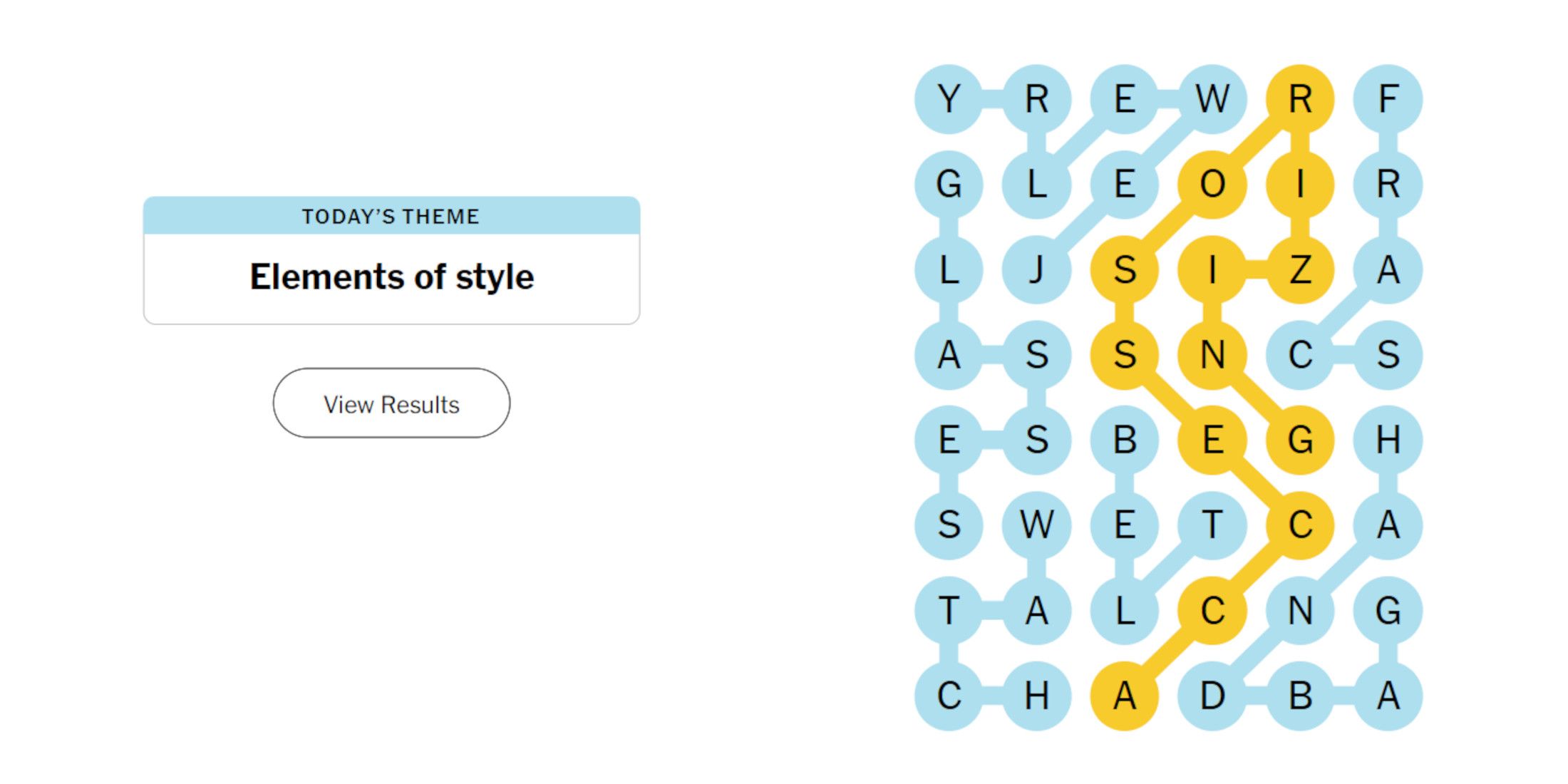Ever wondered how to conquer the New York Times crossword like a seasoned pro? This ain't just any puzzle—it's a mental workout that tests your vocabulary, logic, and patience. Whether you're a newbie or a veteran solver, mastering the art of cracking the NYT crossword is no small feat. But don't sweat it—we’ve got your back with a comprehensive guide to help you unlock its secrets and become a master solver.
Now, let’s be honest here. The New York Times crossword isn’t just another game to pass the time. It’s a daily challenge that has been thrilling puzzle enthusiasts for decades. Solvers from all walks of life dive into it, some for fun, others for the sheer intellectual satisfaction. But what makes it so special? Well, it’s not just about filling in the blanks—it's about understanding the nuances, the clever wordplay, and the patterns that make it uniquely challenging.
So, whether you're stuck on a Monday starter or wrestling with a Thursday theme, this guide will give you the tools you need to tackle the NYT crossword with confidence. Let's dive in and uncover the secrets to mastering the art of solving, one square at a time.
Read also:Lara Rose Leak
Understanding the Basics of NYT Crossword Structure
Before we jump into the nitty-gritty of solving techniques, it’s crucial to grasp the structure of the New York Times crossword. Picture it like a well-orchestrated symphony—each part plays a role in creating the overall masterpiece. Here’s a quick breakdown:
- Grid Layout: The crossword grid is always symmetrical, meaning if you rotate it 180 degrees, it looks the same. This symmetry is a key feature that helps solvers anticipate certain patterns.
- Clue Types: Clues come in various flavors—some are straightforward definitions, others are puns or pop culture references. Understanding the different types of clues will sharpen your solving skills.
- Difficulty Levels: The puzzles get progressively harder throughout the week. Mondays are the easiest, while Saturdays are notorious for their trickiness. Knowing this can help you pace yourself and set realistic expectations.
By familiarizing yourself with these basics, you'll be better equipped to tackle the puzzles. It’s like learning the rules of the game before stepping onto the field. Now, let’s move on to some advanced strategies.
Key Strategies to Tackle NYT Crossword Clues
Alright, so you’ve got the basics down. But how do you actually solve those pesky clues? Here’s where the real magic happens. Below are some tried-and-true strategies to help you navigate the labyrinth of the NYT crossword:
1. Start with the Easiest Clues
Begin by tackling the clues that seem most straightforward. These are usually short fill-in-the-blank answers or common words. For example, if you see “_and_” with a three-letter answer, chances are it’s “AND.” Easy peasy, right?
2. Look for Wordplay
Wordplay is a hallmark of NYT crosswords. Be on the lookout for clues that use puns, homophones, or double meanings. For instance, a clue like “Doctor’s advice?” might lead to “RX.” Clever, huh?
3. Use Cross-Checking
Don’t forget about cross-checking! If you’re unsure about a particular answer, check the intersecting letters from other clues. This can often give you the confidence to fill in the blanks.
Read also:Chad Walton Columbus Indiana
These strategies will help you build momentum and tackle even the toughest puzzles. But remember, practice makes perfect. Let’s dive deeper into some specific techniques.
Common Themes and Patterns in NYT Crosswords
Every great crossword has its own set of recurring themes and patterns. Recognizing these can give you a significant edge. Here are a few to watch out for:
- Pop Culture References: From movie titles to celebrity names, the NYT loves to sprinkle in pop culture clues. Keep an eye on current events and trends.
- Abbreviations: Shortened forms of words are common in crosswords. Think about acronyms, initials, and abbreviations when you’re stumped.
- Recurring Answers: Some answers pop up frequently in NYT crosswords. Words like “ERA,” “ETA,” and “OREO” are crossword staples.
By keeping these themes in mind, you’ll start noticing patterns that will make solving feel more intuitive. Let’s explore how to harness your knowledge further.
Enhancing Your Vocabulary for Better Solving
Let’s face it—having a broad vocabulary is a huge advantage when it comes to crosswords. But don’t worry if you’re not a walking dictionary yet. There are plenty of ways to expand your word power:
1. Read Widely
Immerse yourself in a variety of reading materials. Newspapers, novels, and even blogs can expose you to new words and phrases. The more you read, the more familiar you’ll become with the language used in crosswords.
2. Use Crossword-Specific Resources
There are tons of resources out there designed specifically for crossword enthusiasts. Websites like XWord Info and the NYT’s own archives can help you learn common answers and patterns.
3. Practice Regularly
Like any skill, solving crosswords improves with practice. Set aside time each day to work on puzzles. Over time, you’ll notice your vocabulary growing and your solving speed increasing.
Building your vocabulary is a marathon, not a sprint. Stick with it, and you’ll see results. Now, let’s talk about another crucial aspect of mastering the NYT crossword.
Understanding the Role of Logic in Solving
While vocabulary is important, logic plays an equally vital role in solving crosswords. Here’s how you can sharpen your logical thinking:
1. Analyze the Clues
Take a close look at each clue. Break it down into its components and think about possible interpretations. Sometimes, the answer is hiding in plain sight.
2. Use Process of Elimination
If you’re stuck, try eliminating unlikely answers. Narrowing down the possibilities can often lead you to the right solution.
3. Think Outside the Box
Don’t be afraid to think creatively. Crosswords often require you to approach problems from unconventional angles. Embrace the challenge!
Logic is your secret weapon when it comes to solving tough puzzles. Combine it with your growing vocabulary, and you’ll be unstoppable.
Mastering the Art of Collaboration
Sometimes, two heads are better than one. Collaborating with fellow solvers can enhance your experience and improve your skills. Here’s how:
- Join Online Communities: There are plenty of online forums and groups where crossword enthusiasts share tips and tricks. Engaging with these communities can be incredibly rewarding.
- Pair Up with a Partner: Solving with a friend can make the process more enjoyable and help you learn from each other’s strengths.
- Participate in Competitions: Competitions can push you to improve and give you a chance to meet other passionate solvers.
Collaboration can take your solving to the next level. Don’t be afraid to reach out and connect with others who share your passion.
Tools and Resources for NYT Crossword Solvers
In today’s digital age, there’s no shortage of tools and resources to help you master the NYT crossword. Here are a few worth checking out:
1. NYT Crossword App
The official NYT crossword app offers a seamless solving experience. With features like hint systems and leaderboards, it’s a must-have for any serious solver.
2. XWord Info
This website is a treasure trove of crossword information. You can search for specific answers, track your progress, and learn about recurring patterns.
3. Crossword Solver Tools
There are several online tools that can help you solve tricky clues. While they shouldn’t replace your own efforts, they can be handy when you’re really stuck.
These tools can make solving more efficient and enjoyable. But remember, the real satisfaction comes from solving on your own!
Overcoming Common Challenges in Solving
Even the best solvers encounter obstacles from time to time. Here are some common challenges and how to overcome them:
1. Blank Stares
Ever stared at a clue for so long that your brain turns to mush? Step away for a bit. A fresh perspective can make all the difference.
2. Tough Themes
Some puzzles have themes that are particularly tricky. Break them down into smaller parts and tackle each one individually.
3. Time Constraints
Feeling rushed? Set a timer and challenge yourself to solve as much as you can within a set period. This can improve your focus and speed.
Challenges are part of the journey. Embrace them, and you’ll come out stronger on the other side.
Conclusion: Your Journey to Mastering the NYT Crossword
So, there you have it—a comprehensive guide to mastering the New York Times crossword. From understanding the basics to honing your skills, you now have the tools you need to become a master solver. Remember, the key is practice, persistence, and a dash of creativity.
Now, it’s your turn to take action. Share this guide with fellow solvers, leave a comment with your favorite solving tips, or dive into the NYT crossword app and start practicing. The more you engage with the community and resources, the faster you’ll improve. Happy solving, and may your grids always be full!
Table of Contents
- Understanding the Basics of NYT Crossword Structure
- Key Strategies to Tackle NYT Crossword Clues
- Common Themes and Patterns in NYT Crosswords
- Enhancing Your Vocabulary for Better Solving
- Understanding the Role of Logic in Solving
- Mastering the Art of Collaboration
- Tools and Resources for NYT Crossword Solvers
- Overcoming Common Challenges in Solving
- Conclusion: Your Journey to Mastering the NYT Crossword


